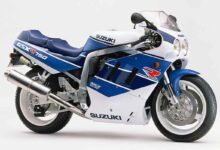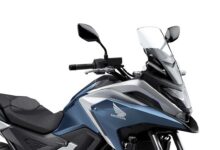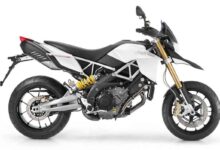Suzuki GSX R1000R and GSX R750 100th Anniversary Quickspin
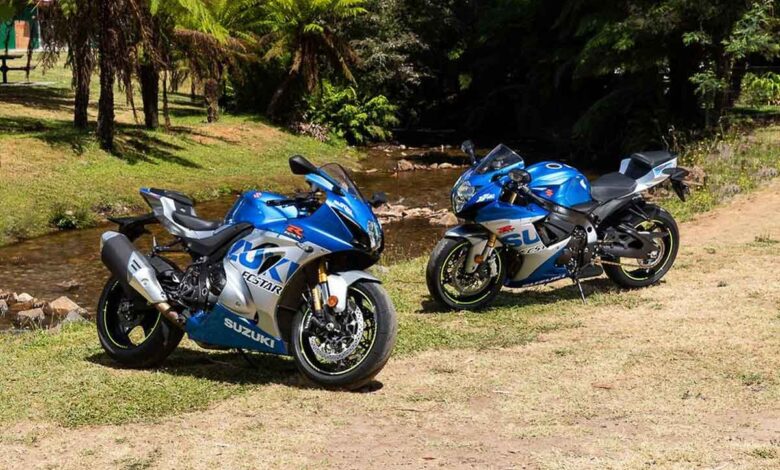
Contents
- 1 Suzuki GSX R1000R and GSX R750 100th Anniversary Quickspin
- 2 The Ultimate Comparison: Suzuki GSX R1000R and GSX R750
- 2.1 Introduction:
- 2.2 Design and Aesthetics:
- 2.3 Doing the Gixxer jig
- 2.4 Technology and Features:
- 2.5 Eyes on the prize Suzuki GSX R1000R and GSX R750
- 2.6 Stepping up
- 2.7 Locked and loaded
- 2.8 Engine Performance:
- 2.9 Handling and Ride Quality:
- 2.10 Summing up
- 2.11 Price and Value for Money:
- 2.12 Specs: 2021 Suzuki GSX-R1000R 100th Anniversary
- 2.13 CHASSIS AND RUNNING GEAR
- 2.14 DIMENSIONS AND CAPACITIES
Suzuki GSX R1000R and GSX R750 100th Anniversary Quickspin
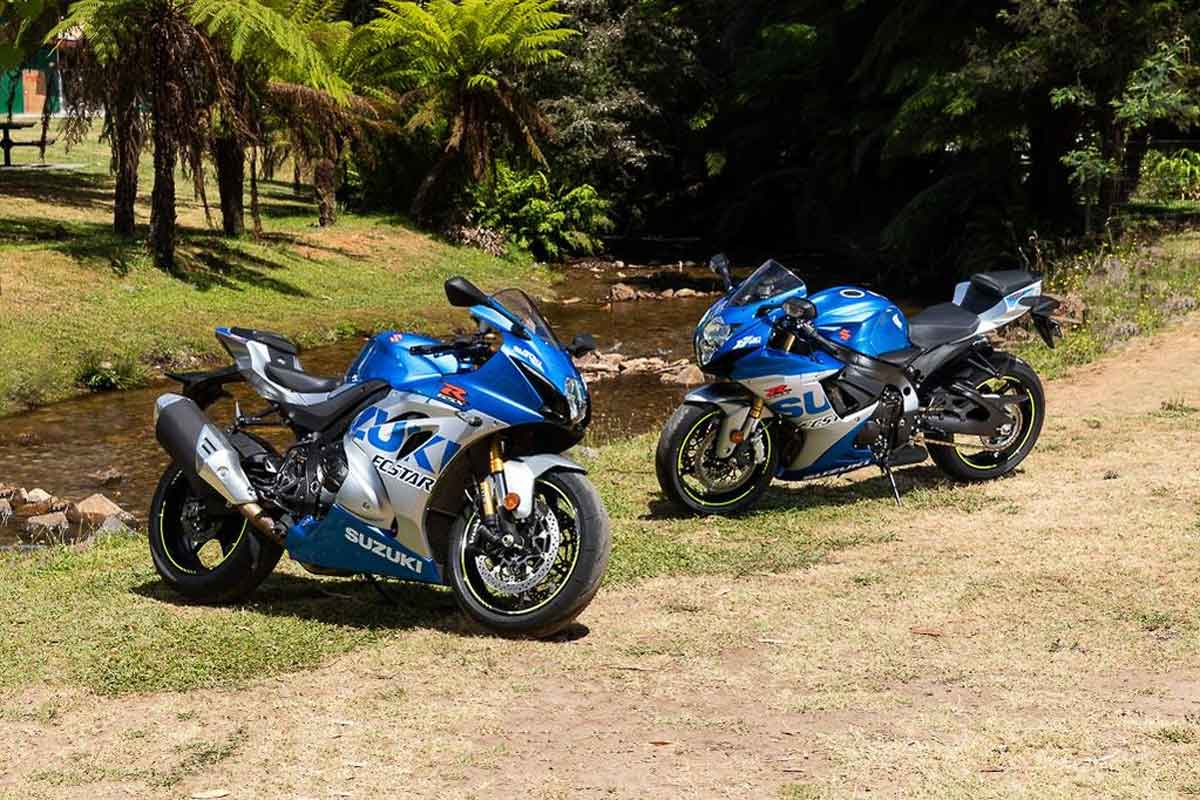
The Ultimate Comparison: Suzuki GSX R1000R and GSX R750
Introduction:
Welcome to our blog post where we will be comparing two iconic motorcycles from Suzuki GSX R1000R and GSX R750. Both of these bikes have made a significant impact in the world of sports bikes, and in this article, we will dive into their features, performance, and overall riding experience. Whether you are an adrenaline junkie or a motorcycle enthusiast, this comparison will help you make an informed decision when choosing between these two models.
Design and Aesthetics:
The design of a motorcycle plays a crucial role in attracting riders, and both the GSX R1000R and GSX R750 excel in this area. The GSX R1000R boasts a more aggressive and aerodynamic look, with sharp lines and an imposing presence on the road. On the other hand, the GSX R750 features a sleek and compact design that is both stylish and practical.
Ultimately, the choice between these two models depends on personal preference, with the GSX R1000R catering to those who prefer a more aggressive appearance, while the GSX R750 appeals to riders who appreciate a slightly more understated look.
Suzuki GSX R1000R and GSX R750 100th Anniversary QuickspinWith heritage paint schemes and limited availability at no additional cost, these Suzuki GSX-R models are selling quickly.
Suzuki celebrated its 100th year of incorporation in 2020 and to commemorate the milestone, it has released limited-edition versions of its 2021 Suzuki GSX-R1000R, 2021 Suzuki GSX-R750, and 2021 Suzuki GSX-R600. 
The three exclusive variants feature a heritage-inspired Metallic Triton Blue/Metallic Mystic Silver color scheme inspired by the 2020 Team Suzuki ECSTAR MotoGP machines. One of these machines, ridden by Joan Mir, secured victory in the 2020 MotoGP Championship. The race bikes pay homage to Suzuki’s race bikes from the early 1960s, including the RT67, which was ridden by Stuart Graham and later by Barry Sheene.
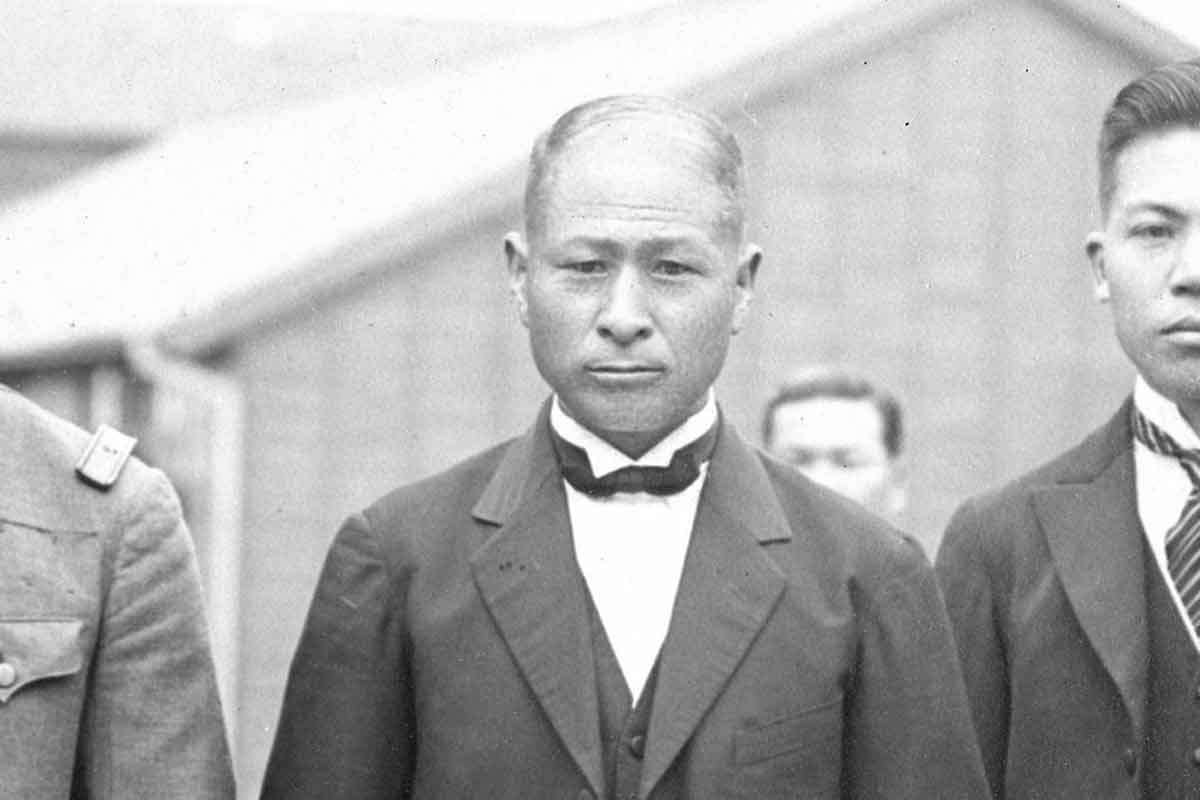
Apart from the paint scheme, each model remains stock standard. However, the flagship Suzuki GSX-R1000R offers upgrades compared to the regular GSX-R1000. This superbike boasts 202hp and includes up-spec Showa suspension (with manual adjustment), an adjustable swingarm pivot point, braided steel front brake lines, LED position lights, and a lightweight battery. The Suzuki GSX-R1000R comes with a $3000 premium. 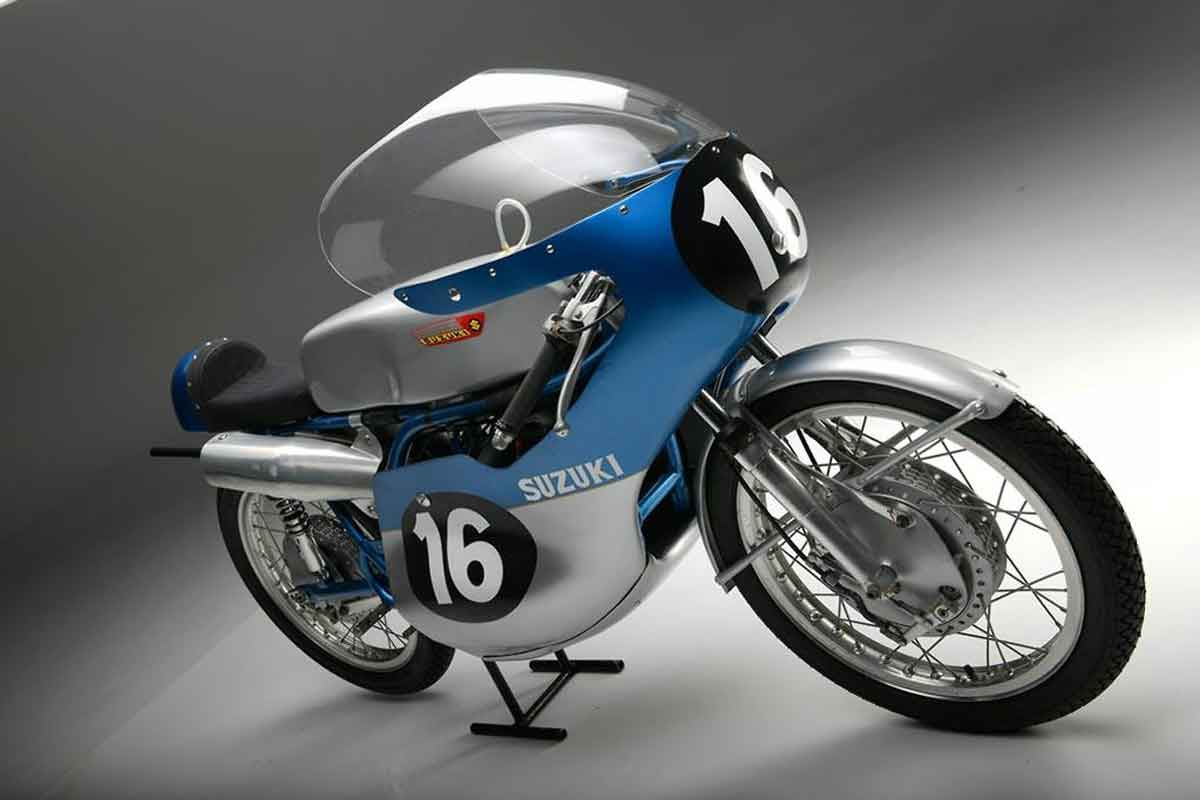
These 100th Anniversary models are available in strictly limited numbers. Suzuki Australia is offering 30 examples of the GSX-R1000R, 50 of the GSX-R750, and just 10 of the GSX-R600. Despite their exclusivity, these special editions are priced the same as the standard models: $26,990 ride away for the GSX-R1000R, $17,490 ride away for the GSX-R750, and $16,490 ride away for the GSX-R600. Therefore, it is expected that these special editions will not be available for long. 
Suzuki has a proud history that extends beyond motorcycles. The company was founded by Michio Suzuki in 1909 as Suzuki Loom Works and is currently headquartered in Hamamatsu, Japan. Initially, Suzuki manufactured weaving looms for the silk weaving industry.
Over time, the company expanded and on March 15, 1920, it was incorporated as Suzuki Loom Manufacturing Co. With innovative products like looms capable of weaving dyed threads to create multi-colored fabric, Suzuki continued to grow.  After the Second World War, Suzuki responded to the demand for affordable personal transportation by producing its first motorized bicycle, the Power Free, in 1952. This 36cc two-stroke engine-powered bicycle was a great success in terms of sales.
After the Second World War, Suzuki responded to the demand for affordable personal transportation by producing its first motorized bicycle, the Power Free, in 1952. This 36cc two-stroke engine-powered bicycle was a great success in terms of sales. 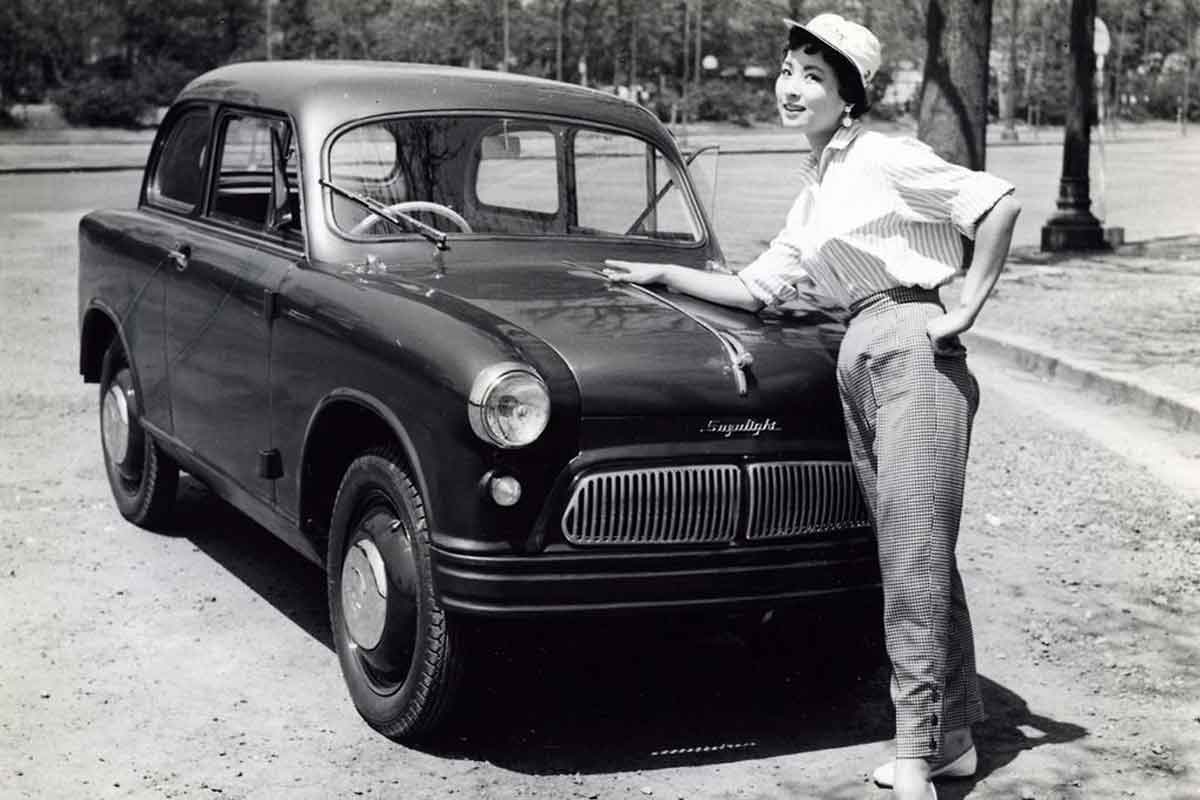 In 1954, the company changed its name to Suzuki Motor Co., Ltd. The following year, Suzuki introduced its first car, the Suzulight, and its first production motorcycles: the four-stroke Colleda COX 125 and the two-stroke Colleda ST 125, both lightweight singles. In 1958, Suzuki adopted its iconic ‘S’ logo which remains unchanged to this day. The company also ventured into marine outboards in 1965.
In 1954, the company changed its name to Suzuki Motor Co., Ltd. The following year, Suzuki introduced its first car, the Suzulight, and its first production motorcycles: the four-stroke Colleda COX 125 and the two-stroke Colleda ST 125, both lightweight singles. In 1958, Suzuki adopted its iconic ‘S’ logo which remains unchanged to this day. The company also ventured into marine outboards in 1965.
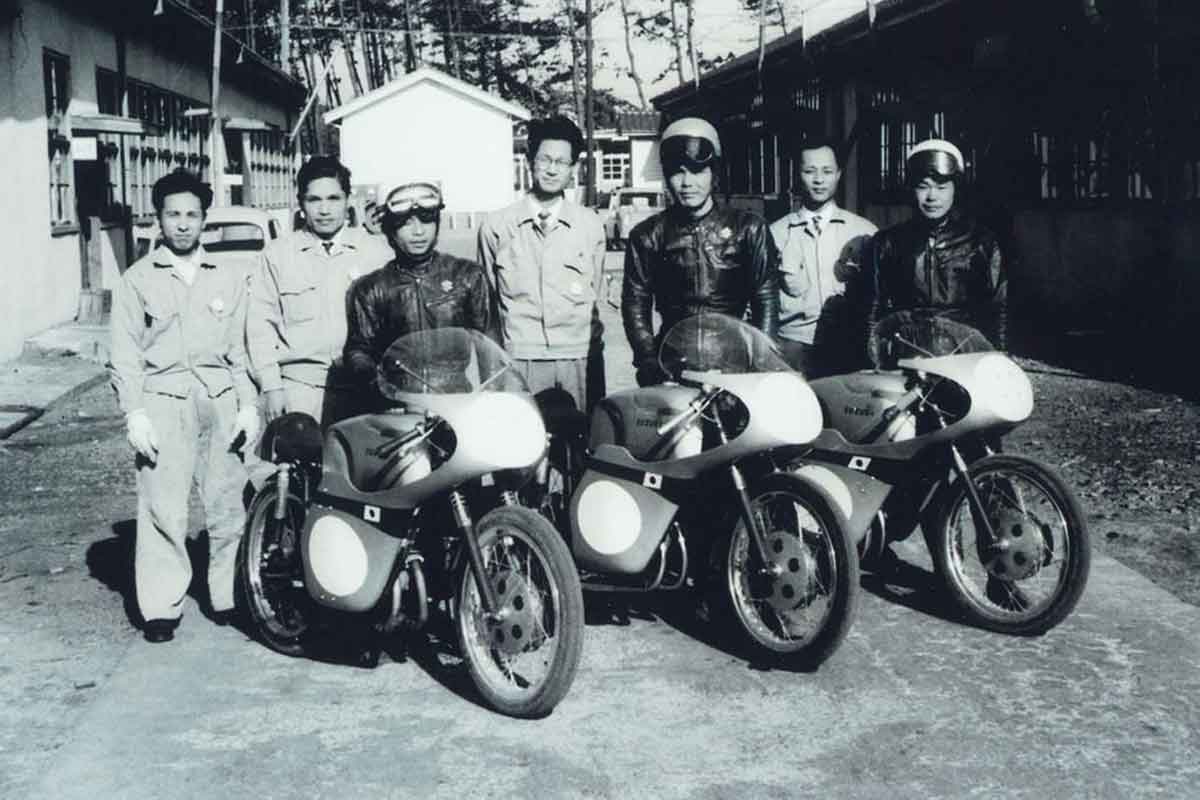 Today, Suzuki continues to operate in three core divisions: cars, motorcycles, and marine products.
Today, Suzuki continues to operate in three core divisions: cars, motorcycles, and marine products. 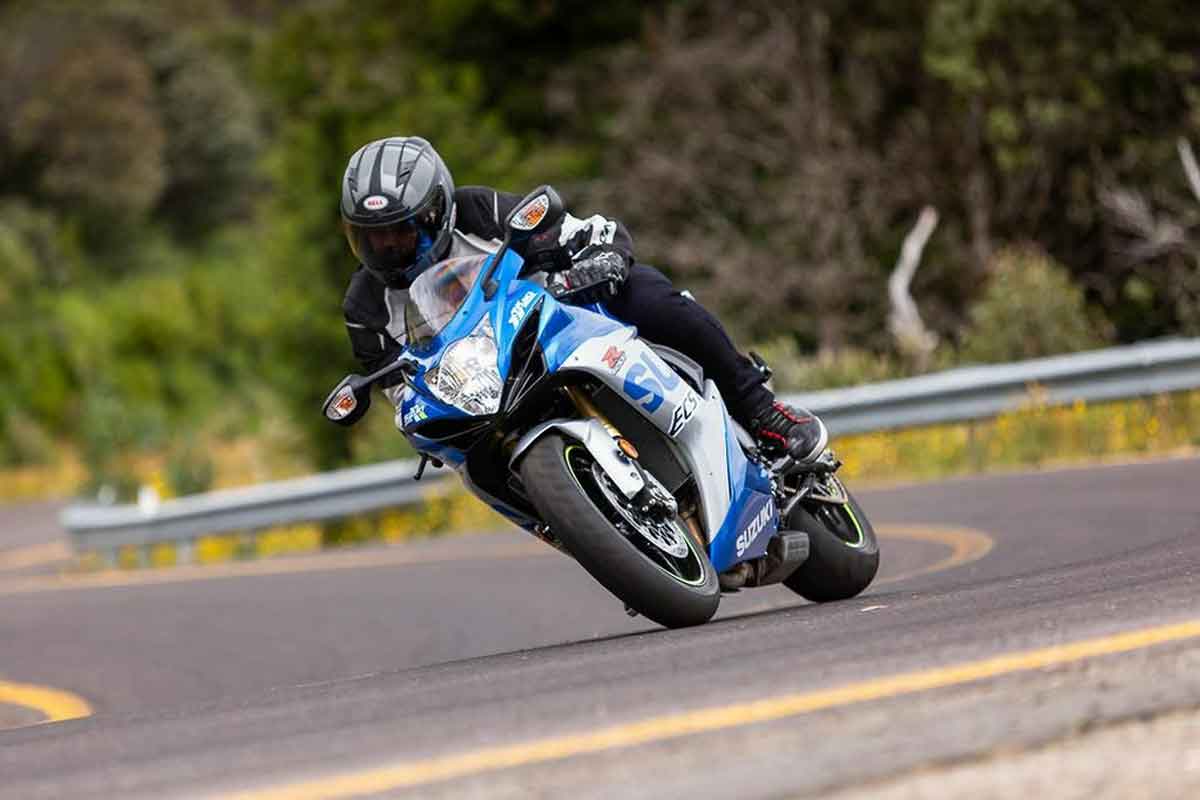
Doing the Gixxer jig
bikesales recently took the 100th Anniversary editions of the Suzuki GSX-R1000R and Suzuki GSX-R750 for a ride in the hills, with bikesales editor Dylan and me pointing the pair towards the Yarra Ranges east of Melbourne.  Beyond track days, this type of terrain is the natural habitat for supersport models like these, and we regularly switched between the two bikes over Black Spur and between Marysville and Lake Mountain. We even took a run up to Lake Eildon for good measure.
Beyond track days, this type of terrain is the natural habitat for supersport models like these, and we regularly switched between the two bikes over Black Spur and between Marysville and Lake Mountain. We even took a run up to Lake Eildon for good measure.
I started on the GSX-R750, which truly occupies a unique space in today’s motorcycle landscape. Inline 750cc fours were extremely popular from the late 1960s, but the rise of litre-class V-twins in the Superbike World Championship in the 1990s led the Japanese manufacturers to slowly abandon the class. All except Suzuki, that is.  Suzuki caused a sensation when it launched the first GSX-R750 in 1985, kick-starting a new era in lightweight, high-performance sports bikes. While the model has undergone many evolutions since then, it hasn’t essentially changed in a decade, but it still serves as a nice intermediate step between the 600 and 1000.
Suzuki caused a sensation when it launched the first GSX-R750 in 1985, kick-starting a new era in lightweight, high-performance sports bikes. While the model has undergone many evolutions since then, it hasn’t essentially changed in a decade, but it still serves as a nice intermediate step between the 600 and 1000.
Technology and Features:
In terms of technology and features, both the GSX R1000R and GSX R750 come equipped with cutting-edge components. The GSX R1000R features a comprehensive suite of electronics, including multiple riding modes, quick shifters, launch control, and an advanced instrument cluster that provides real-time data on speed, gear position, lap times, and more.
Similarly, the GSX R750 offers many of these features but in a slightly more simplified package. Both bikes also come with LED lighting, adjustable footpegs, and high-performance brakes. Whether you choose the GSX R1000R or GSX R750, you can expect a bike that is packed with advanced technology to enhance your riding experience.
Eyes on the prize Suzuki GSX R1000R and GSX R750
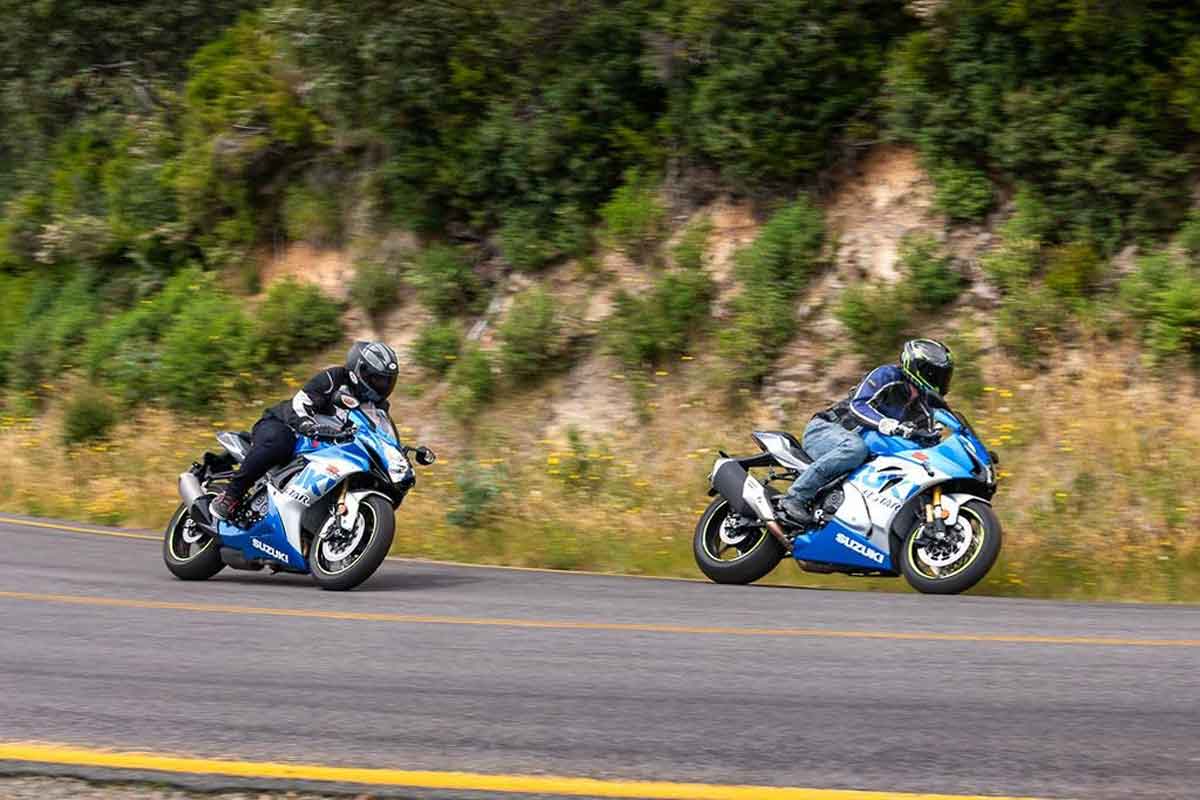
It’s an honest, no-frills, narrow-focus sports bike with just one priority – to get you through a set of bends or around a track as quickly as possible. However, in 2021, it’s beginning to show its age in terms of technology. You can forget about fancy instrumentation, quickshifters, ABS, traction control, and the like, although it does come with a choice of two ride modes and there’s a lap timer. The bare-bones trip information is limited to two trip meters, an odometer, a clock, and little else. 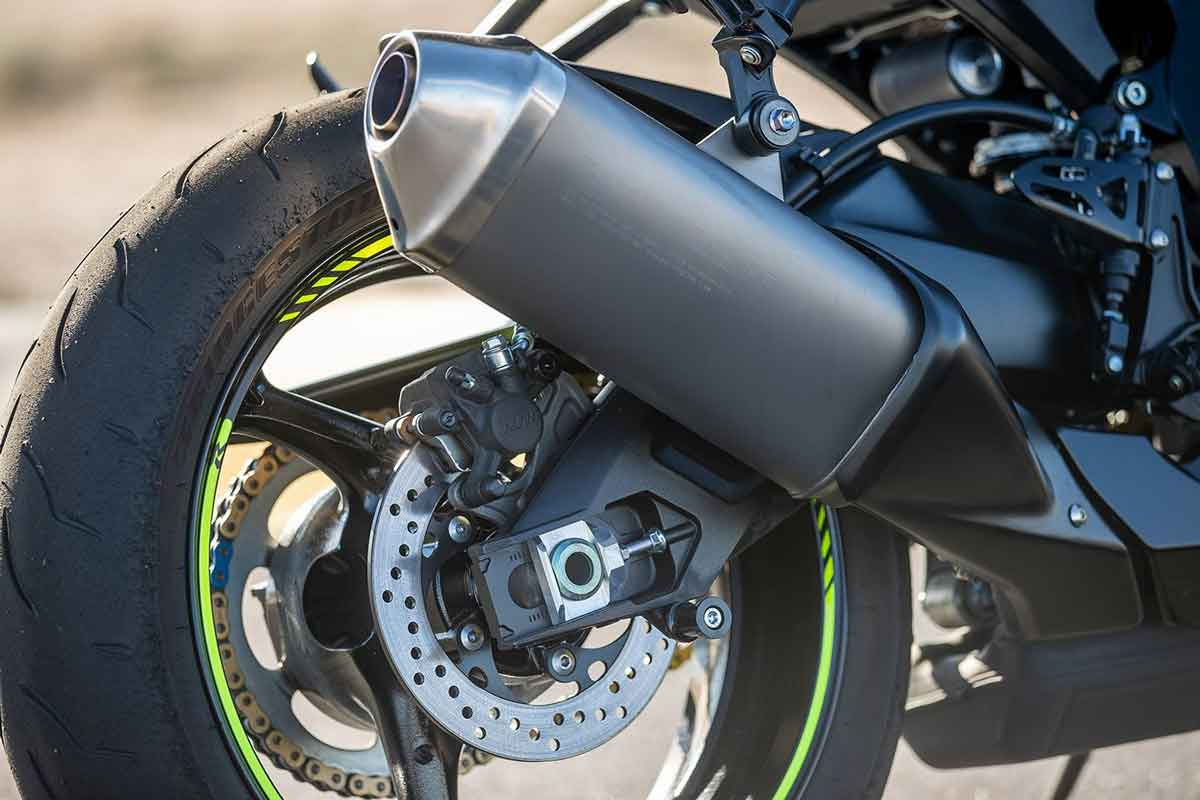
The GSX-R750’s styling is also a bit dated, if you ask me, with its chunky mirrors, the odd faux carbon-fiber body panel, and its broad tailpiece with integrated indicators. However, perhaps this only becomes noticeable when it’s parked next to more modern fare, like its GSX-R1000R big brother. 
Even so, the 100th Anniversary scheme is understated but classy, and I love the fluoro yellow pin-striping accenting those black rims. It may be getting on in years, but the Suzuki GSX-R750 handles corners extremely well, as I quickly discovered in the Yarra Ranges. In fact, as a street bike, I would even say I preferred it to the all-singing, all-dancing Gixxer thousand because on the 750 I felt like I was able to extract more of the bike’s performance potential. On the flip side, very few riders can come anywhere close to tapping into the full potential of a modern litre-class sports bike…
 And of course, there’s the price difference. The Suzuki GSX-R750 is $9500 cheaper than the GSX-R1000R (and still $6500 cheaper than the GSX-R1000). That’s a significant amount that can be spent on new tires!
And of course, there’s the price difference. The Suzuki GSX-R750 is $9500 cheaper than the GSX-R1000R (and still $6500 cheaper than the GSX-R1000). That’s a significant amount that can be spent on new tires! 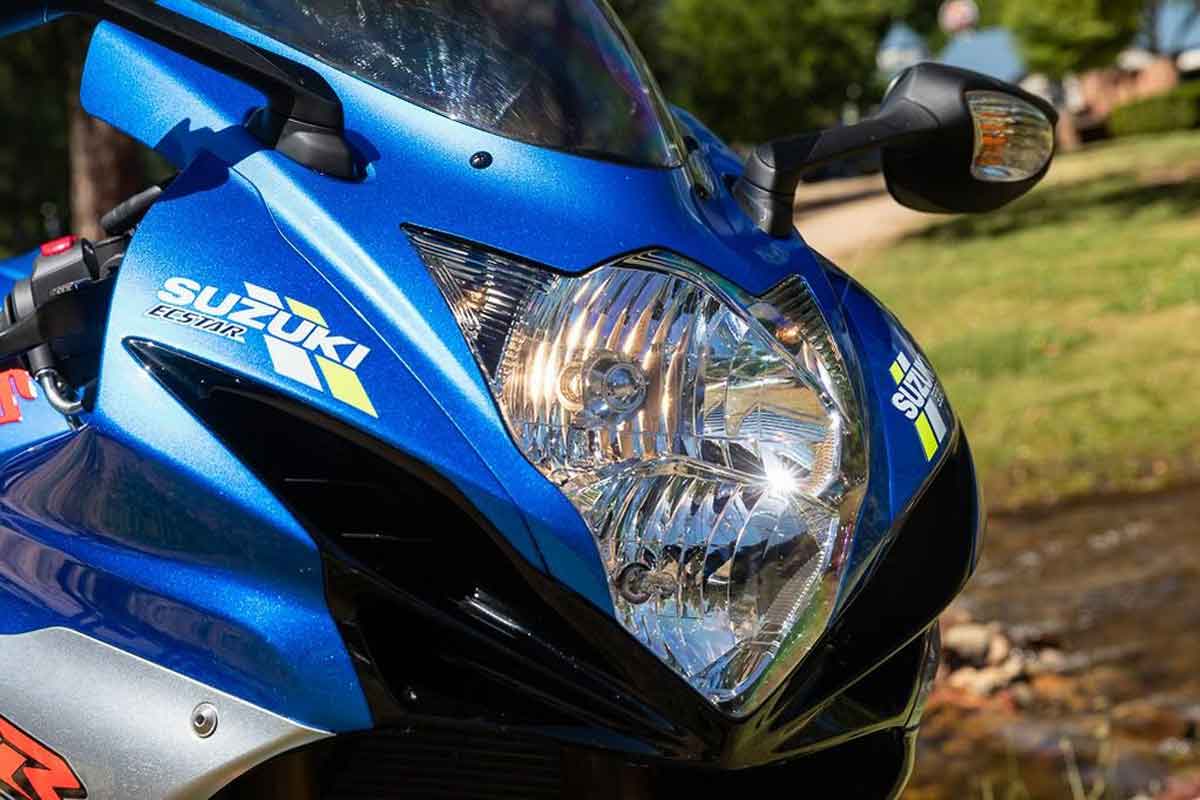
I found the Suzuki GSX-R750 refreshing for its simplicity, yet no less engaging due to the thrilling performance it offers. And that exhaust note! The stock pipe on the 750 emits a chilling banshee howl that stirs the soul – appreciably more so than the more muted note from the 1000’s stock muffler. 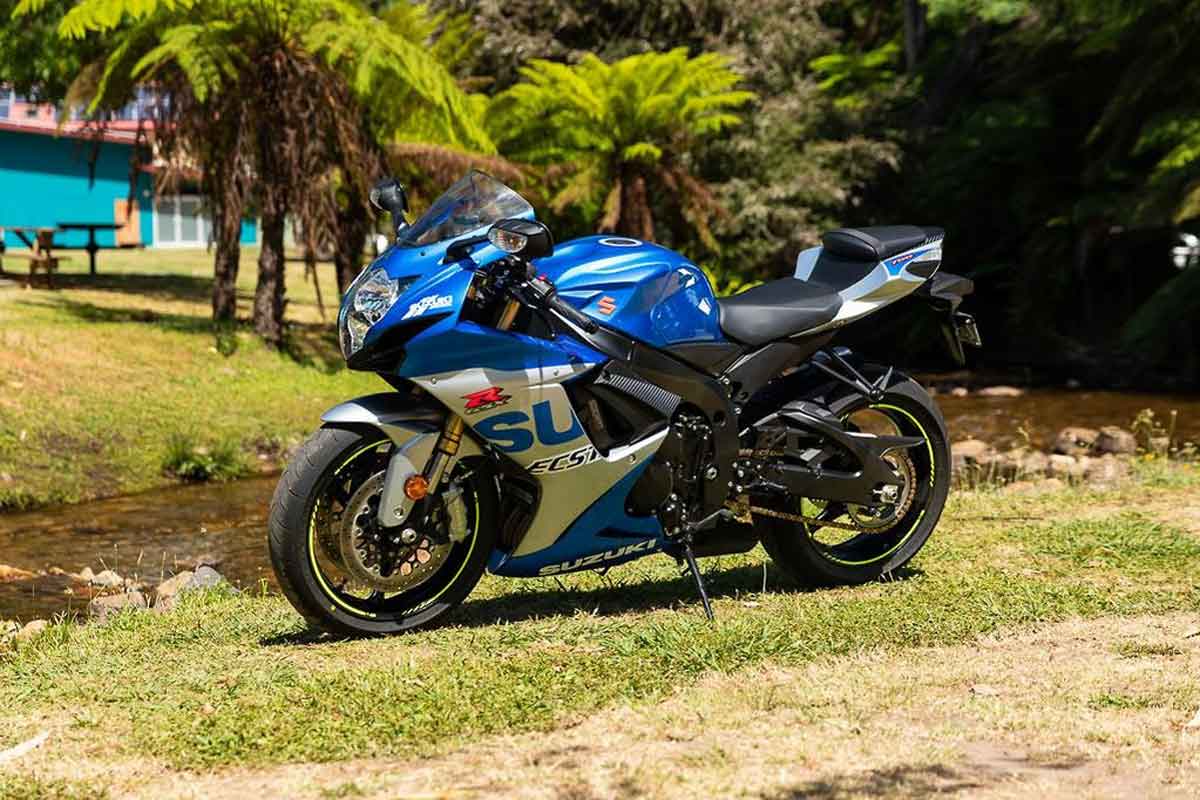
Stepping up
Jumping onto the bigger model – which, it should be noted, is also 13kg heavier – it becomes immediately evident that things are getting serious. The LCD dash is overwhelmingly busy – it’s packed with information – but after spending a little time on the bike, it’s actually not too difficult to learn your way around the various functions and menus. 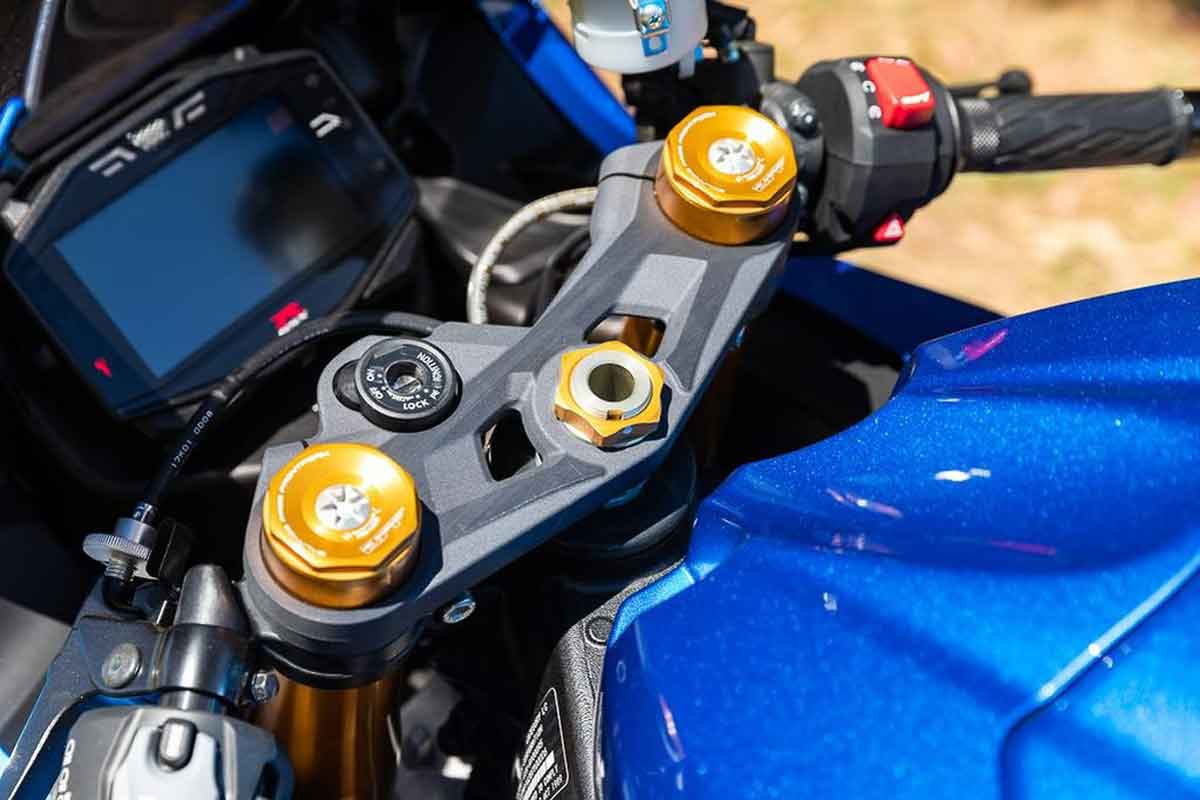 It’s reassuring to have all the modern safety gear on hand to catch you should bravado triumph over talent – there’s Cornering ABS, 10-level traction control (yes, 10!), and three ride modes. And when you first open the throttle in anger, it’s nice to know that safety net is keeping watch (though it’s not a substitute for the ultimate safeguard – your own common sense!).
It’s reassuring to have all the modern safety gear on hand to catch you should bravado triumph over talent – there’s Cornering ABS, 10-level traction control (yes, 10!), and three ride modes. And when you first open the throttle in anger, it’s nice to know that safety net is keeping watch (though it’s not a substitute for the ultimate safeguard – your own common sense!). 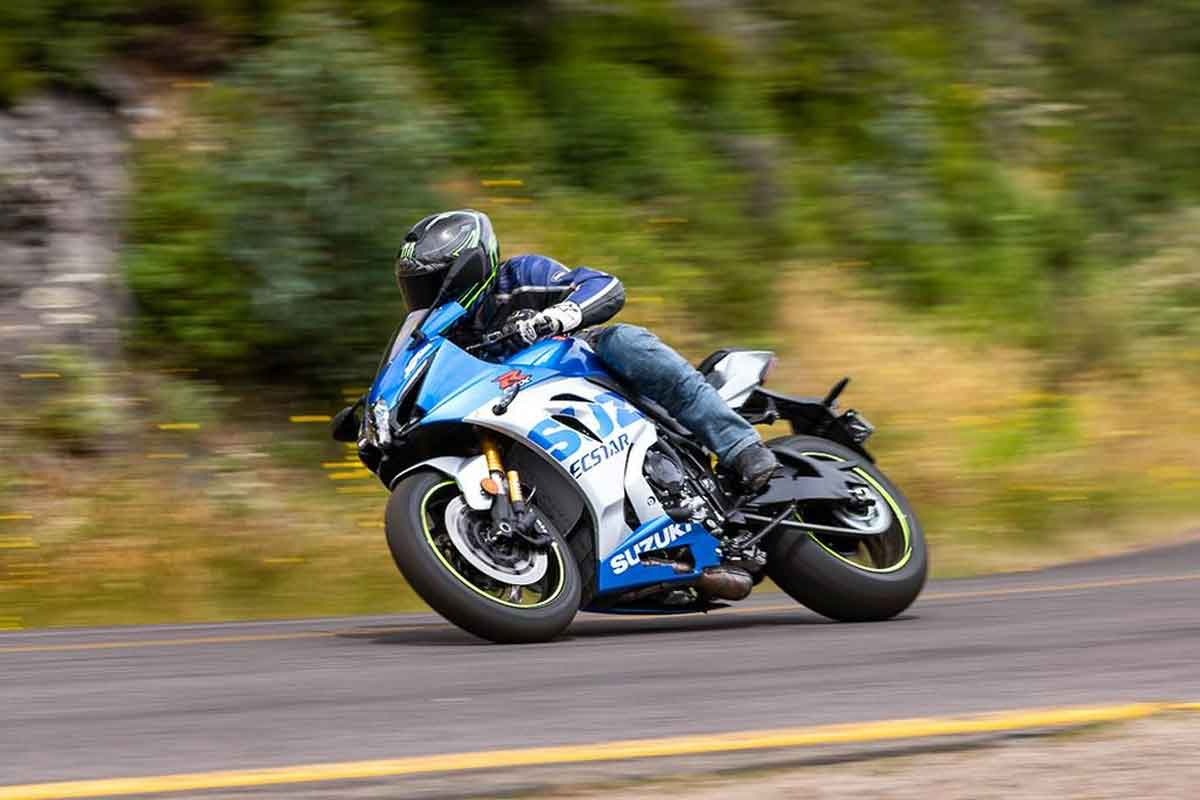 Right from the start, the Suzuki GSX-R1000R feels muscular and athletic. Like the 750, it’s entirely possible to ride it with a bit of restraint at around-town speeds, but once the revs start to climb – past 6000-7000rpm, for example – you get the feeling that you’ve strapped into one of those giant rubber band fairground rides, where you’re essentially launched from a giant slingshot. The rate of mind-bending acceleration increases exponentially as you approach redline, as you lean the bike over and focus on the next corner apex.
Right from the start, the Suzuki GSX-R1000R feels muscular and athletic. Like the 750, it’s entirely possible to ride it with a bit of restraint at around-town speeds, but once the revs start to climb – past 6000-7000rpm, for example – you get the feeling that you’ve strapped into one of those giant rubber band fairground rides, where you’re essentially launched from a giant slingshot. The rate of mind-bending acceleration increases exponentially as you approach redline, as you lean the bike over and focus on the next corner apex.  It’s absolutely insane – so exaggerated for use on public roads, yet so devilishly intoxicating because of that fact.
It’s absolutely insane – so exaggerated for use on public roads, yet so devilishly intoxicating because of that fact.
Locked and loaded
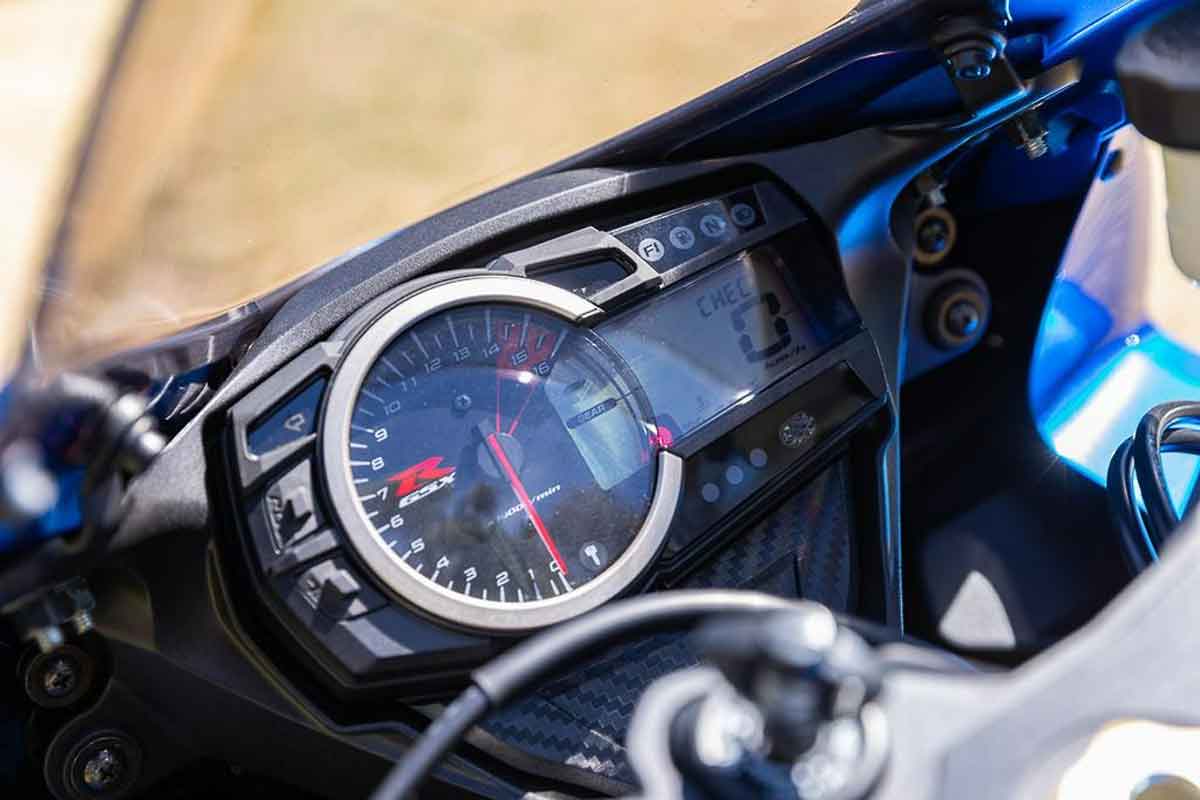 The ergonomics are similar for each bike, with perhaps a little more legroom on the GSX-R1000R. It’s a typical racer’s crouch, although I’ve ridden more extreme machines over the years. Resting your stomach on the tank will be par for the course on longer rides, so make sure you put on a tank protector to avoid scratching that limited-edition paint.
The ergonomics are similar for each bike, with perhaps a little more legroom on the GSX-R1000R. It’s a typical racer’s crouch, although I’ve ridden more extreme machines over the years. Resting your stomach on the tank will be par for the course on longer rides, so make sure you put on a tank protector to avoid scratching that limited-edition paint.  I thought the brakes on the GSX-R750 were powerful and precise – and then I rode the 1000. The Suzuki GSX-R1000R’s Brembos with steel braided lines take it to another level: so much stopping power, yet such incredible feel. Backed by Cornering ABS, these brakes are the complete package.
I thought the brakes on the GSX-R750 were powerful and precise – and then I rode the 1000. The Suzuki GSX-R1000R’s Brembos with steel braided lines take it to another level: so much stopping power, yet such incredible feel. Backed by Cornering ABS, these brakes are the complete package.
Then there’s the bidirectional quickshifter (with two sensitivity settings), which works excellently, and launch control. No wheelie control, though. And the Showa Balance Free Front fork (or BFF) and Showa Balance Free Rear lite monoshock provide an exceptional ride and offer a high level of manual adjustment.
Not that the Showa BPF setup on the 750 is any less impressive. And both bikes benefit from ultra-smooth six-speed gearboxes – a Suzuki strength that dates back decades – and super-light (slipper) clutches. Fuel economy? Surprisingly good, given their performance focus. We recorded 5.8L/100km in the hills on the GSX-R1000R, and 5.3L/100km on the GSX-R750. That translates to healthy working ranges of around 250km and 300km respectively.
Read More:
Review Detail: Suzuki GSX-R750
Engine Performance:
When it comes to engine performance, both the GSX R1000R and GSX R750 deliver exceptional power and speed. The GSX R1000R is equipped with a 999.8cc four-cylinder engine that produces a staggering 199 horsepower. This beast of an engine allows the bike to accelerate from 0 to 60 mph in just 2.7 seconds, making it one of the fastest motorcycles in its class.
On the other hand, the GSX R750 features a slightly smaller 750cc engine that still packs a punch with 150 horsepower. While it may not be as powerful as its larger counterpart, the GSX R750 offers a more nimble and agile riding experience. Ultimately, it boils down to whether you prefer raw power or a balance between power and maneuverability.
Handling and Ride Quality:
When it comes to handling and ride quality, both the GSX R1000R and GSX R750 offer exceptional performance. The GSX R1000R features advanced suspension systems and electronic aids such as traction control and cornering ABS that enhance stability and control.
Its larger size may make it slightly less agile in tight corners, but it compensates with superior stability at high speeds. On the other hand, the GSX R750’s smaller size and lighter weight make it more maneuverable and easier to handle in tight spaces.
It offers a thrilling riding experience with precise control and responsiveness. Whether you prioritize stability or agility, both bikes offer an exhilarating ride.
Summing up
Both of these bikes are pure adrenaline on wheels. They are the quintessential racers with lights, so they may not be suitable for everyone. Designed for the track, when riding on public roads, you will need to keep a close eye on your speedometer and exercise a great deal of self-restraint if you want to avoid losing your license. 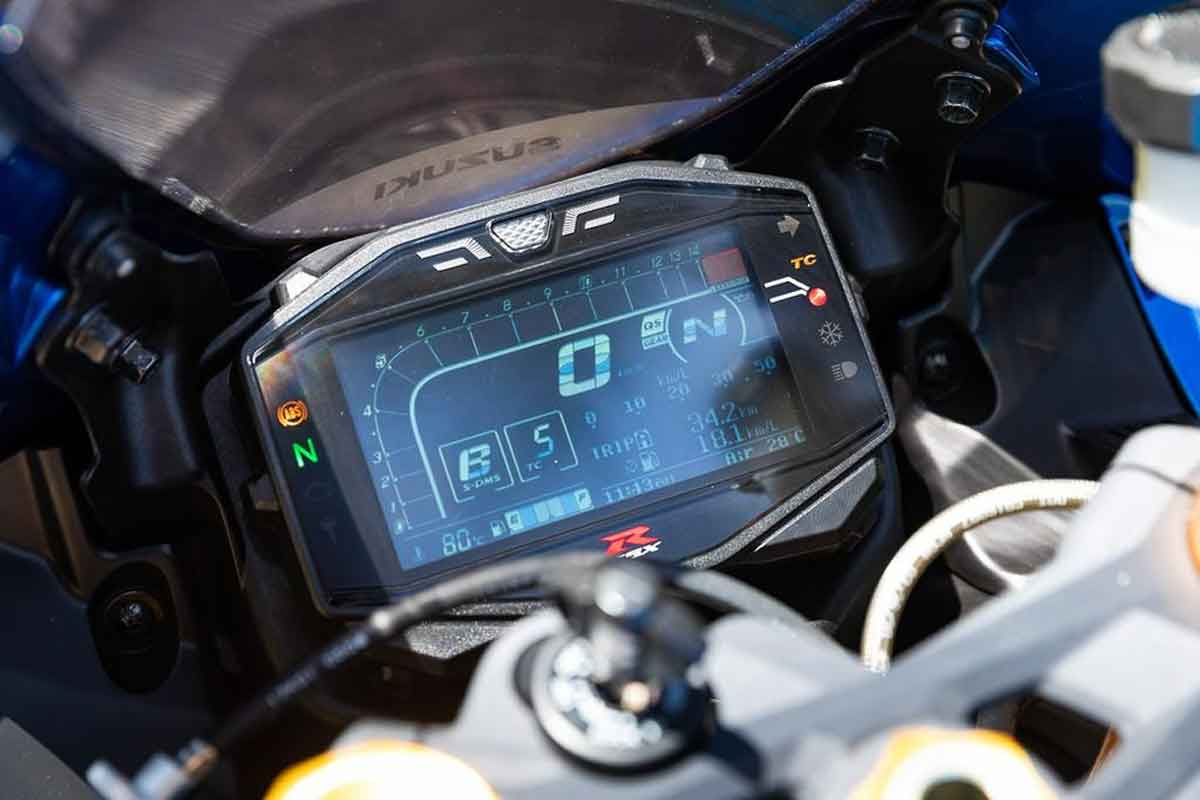 If you desire all the extra features and the bragging rights that come with owning a machine that has over 200 horsepower, then the Suzuki GSX-R1000R will certainly impress you – although it comes with a high price tag.
If you desire all the extra features and the bragging rights that come with owning a machine that has over 200 horsepower, then the Suzuki GSX-R1000R will certainly impress you – although it comes with a high price tag.
However, if you prefer a more old-school sporting experience at a slightly more moderate speed, Suzuki’s battle-tested and budget-friendly GSX-R750 still delivers excitement. Both bikes have the performance to match their Grand Prix-inspired appearances. However, if you want to secure one of Suzuki’s 100th Anniversary Gixxers without any additional cost, you will need to act quickly. 
Price and Value for Money:
Price is an important factor to consider when comparing motorcycles, and both the GSX R1000R and GSX R750 offer excellent value for money in their respective classes. The GSX R1000R is priced higher due to its larger engine size and advanced features, but it delivers unparalleled power and performance for riders seeking an adrenaline rush.
On the other hand, the GSX R750 provides a more affordable option without compromising on performance and features. It is a great choice for riders who want a balance between power and price. Ultimately, your budget will be a determining factor in choosing between these two models.
Specs: 2021 Suzuki GSX-R1000R 100th Anniversary
 CHASSIS AND RUNNING GEAR
CHASSIS AND RUNNING GEARSpecs: 2021 Suzuki GSX-R750

CHASSIS AND RUNNING GEAR
DIMENSIONS AND CAPACITIES
In conclusion, both the GSX R1000R and GSX R750 are exceptional motorcycles that cater to different types of riders. The GSX R1000R offers unmatched power, aggressive styling, and advanced electronics for those seeking the ultimate thrill on two wheels. On the other hand, the GSX R750 provides a more balanced package with its nimble handling, affordability, and impressive performance.
Whether you prioritize raw power or a combination of performance and value for money, Suzuki has you covered with these two iconic models. Choose the one that suits your riding style and preferences, and get ready for an unforgettable experience on the open road!
Motoinworld
Twiter: https://twitter.com/motoinworld2023
Instagram: https://www.instagram.com/motoinworld/


